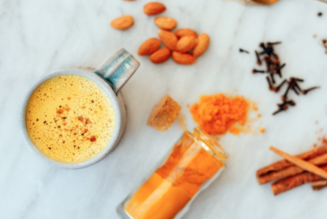The Ayurvedic Consultation
Health is not simply the absence of disease, but is a state of balance that provides for wellbeing, clarity, and joy. Ayurveda – “The Science Of Life” is considered to be the longest continuously practiced system of traditional medicine and emphasizes on creating balance in all areas of life. Not only does Ayurveda examine the body but inquires further about daily diet, lifestyle, relationships, stress, and overall sense of well-being.
THE INITIAL CONSULTATION
The initial consultation involves a thorough examination allowing the consultant to identify key symptoms and potential causes of imbalance and to eventually determine suitable food and lifestyle recommendations.
Observation [Darshan]:
An Ayurvedic practitioner is able to evaluate the state of health simply by looking at the patient and observing his/her movements, body contour, color of the skin and eyes, facial lines and ridges, shape of the nose, and various other features of the lips, hair, and nails.
Touch [Sparsha]:
The practitioner then employs touch, including palpation called sparshanam in Ayurveda, auscultation, which implies listening for sounds of the internal organs (shrvanaa), and percussion or tapping (akotana). There is also special attention on evaluating the patient’s pulse, tongue, nails, and speech. Laboratory testing may also be included under this category.
Questions [Prashna]:
The practitioner will then ask the patient about presenting signs and symptoms, as well as the duration of discomfort as well as any other associations related to the disease progression. The practitioner will also inquire further into the overall lifestyle of the patient.
Great Video: The Ayurvedic Consultation
Pulse.
Taking the pulse is a way to determine one’s constitution and current state of real-time imbalances. The Ayurvedic consultant feels for the strength of vata, pitta, and kapha in the pulse. The practitioner looks for the overall qualities of the pulse.
– vata is felt under the index finger with dry, light, and cold qualities
– pitta in the middle finger with hot, sharp, and bounding qualities
– kapha under the ring finger with slow, soft, and steady qualities
Tongue.
When examining the tongue, the consultant looks at the color and shape of the tongue while checking the presence of scallops on the sides of the tongue, any excessive movement, the presence of coating and/or cracking of the tongue, etc.
Coating on the tongue often indicates the presence of “ama”, or poorly digested food, still present in the digestive system. The location [i.e. anterior 1/3, middle 1/3, posterior 1/3] and color of the coating on the tongue provides information on the type and location of ama within the digestive system; i.e. stomach, small intestine, colon.
Click Here: For Simple Tips To Improve Digestion
Click Here: Ayurvedic Remedies To Improve Digestion
Size, Shape, & Color
Generally, a thin, pointed tongue is more prevalent in vata dosha. Pitta often has more redness to the tongue and kapha generally has a large, round-tipped tongue. Scalloped edges on the sides of the tongue (teeth impressions) may indicate possible malabsorption or malnutrition.
Tongue Self-Assessment
First thing in the morning stick out your tongue and consider performing an Ayurvedic self-assessment. Question whether there is coating on the tongue and, if so – what color is the coating? Generally, white is an indication of kapha imbalance in the digestive system, yellow or green implies pitta imbalance, and brown being a vata imbalance. It‘s important to remove this coating every morning by gently scraping from the back to the front of the tongue, three to five times. By gently scraping the tongue this helps to stimulate the digestive system and help to remove digestive waste.
Feces.
Although uncomfortable to discuss, discussing characteristics of stool and one’s bowel movements reveals important information about digestive health. Generally, we should eliminate every morning often upon waking or even within one hour of waking. Ideally, the bowel movement should have no strain nor discomfort and be the consistency of a banana.
– constipation likely indicates the dry qualities of vata.
– loose stools likely indicates the oily nature of pitta
– sticky and sludgy stools may indicate the heavy qualities of kapha.
Simple Recommendation
To help stimulate and cleanse the digestive system, begin the day by sipping warm water with lemon.
Click Here – To Learn The Benefits Of Sipping Hot Water & Preventing ‘Metabolic Syndrome’
Urine.
The color, volume, and frequency of urine can also indicate whether one is properly hydrated.
– scanty urine may reveal the presence of dry qualities of vata dosha
– hot and increased odor of urine may reveal the presence of pitta dosha
– cloudy urine may indicate excess kapha dosha
– pain or discomfort could indicate a more complicated concern
Ayurvedic management may include, but is not limited to: dietary changes, exercise program [i.e. yoga], lifestyle changes, herbs, and stress prevention [i.e. meditation]. The personalized strategy aims to help simplify, harmonize and energize one’s life in order to regain balance – in essence, reduce stress, balance weight, support moods, crave healthier foods, promote immunity, calm the mind, and enjoy more vitality.
DISCLAIMER:
This is strictly for educational purpose only. Always first discuss with your primary care physician before considering any new health regimen.



![Female Health: Amenorrhea [cessation of menses] – An Ayurvedic Perspective](https://healthyayurveda.com/wp-content/uploads/2015/07/1.-Amenorhea--327x219.png)




